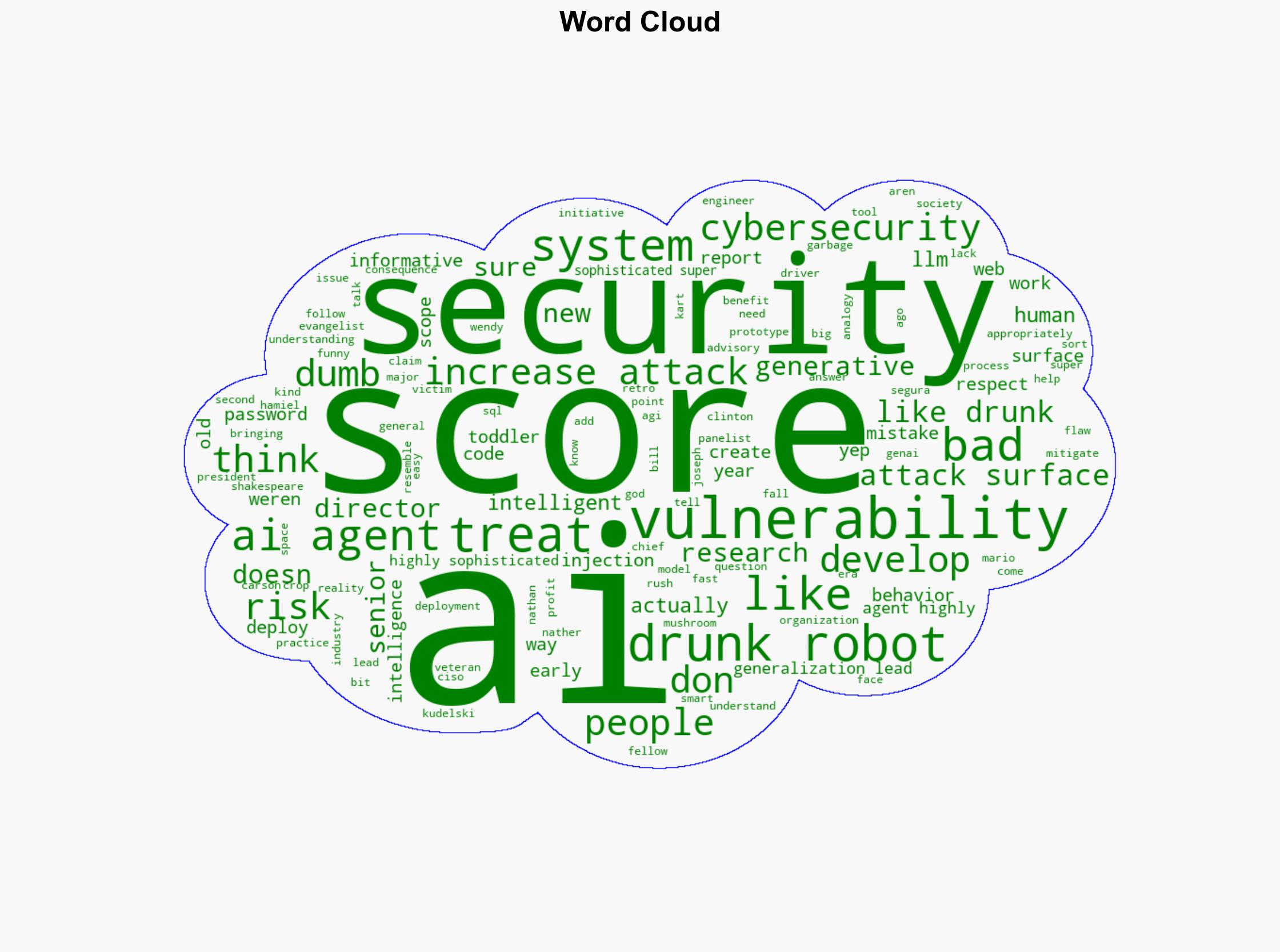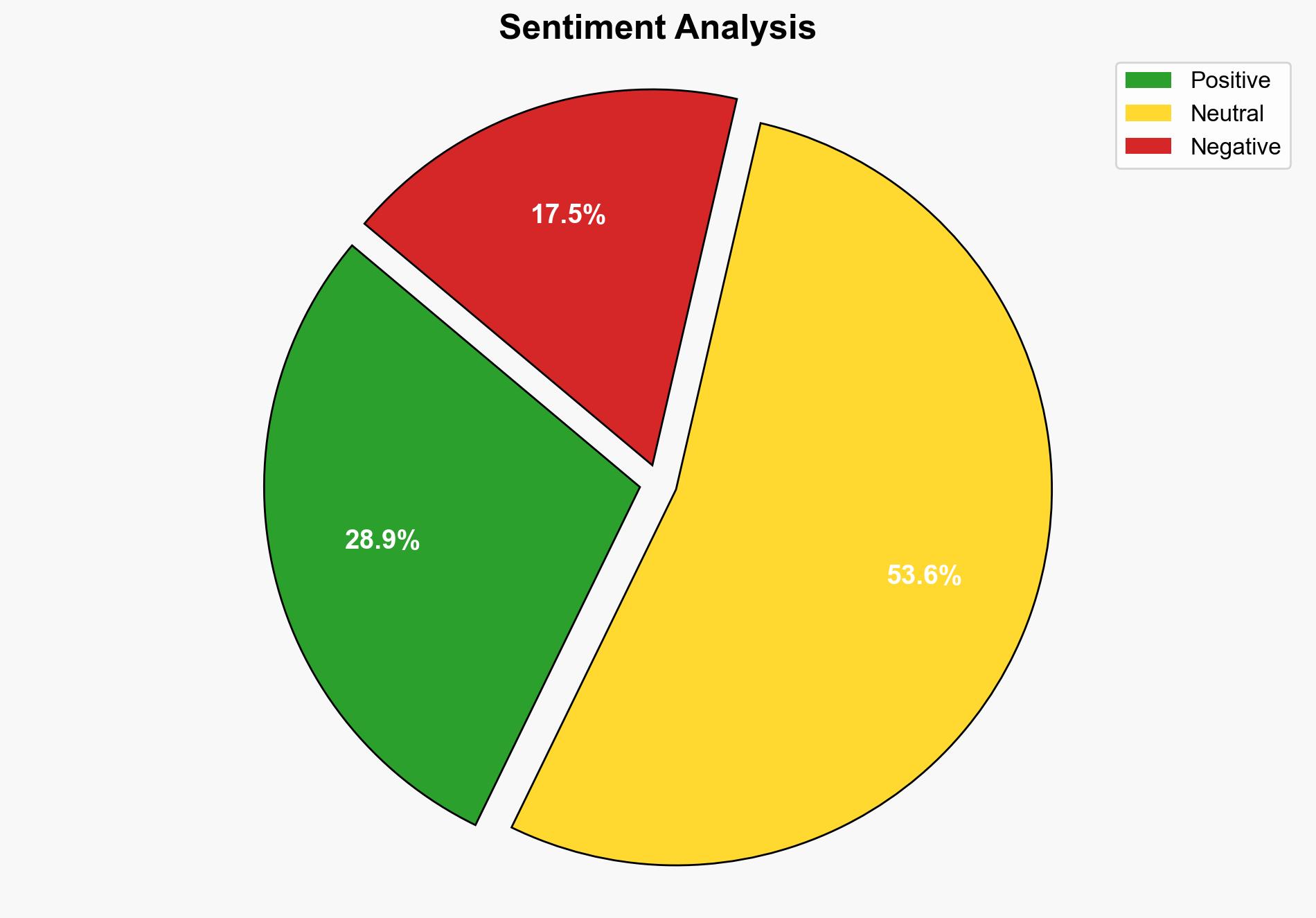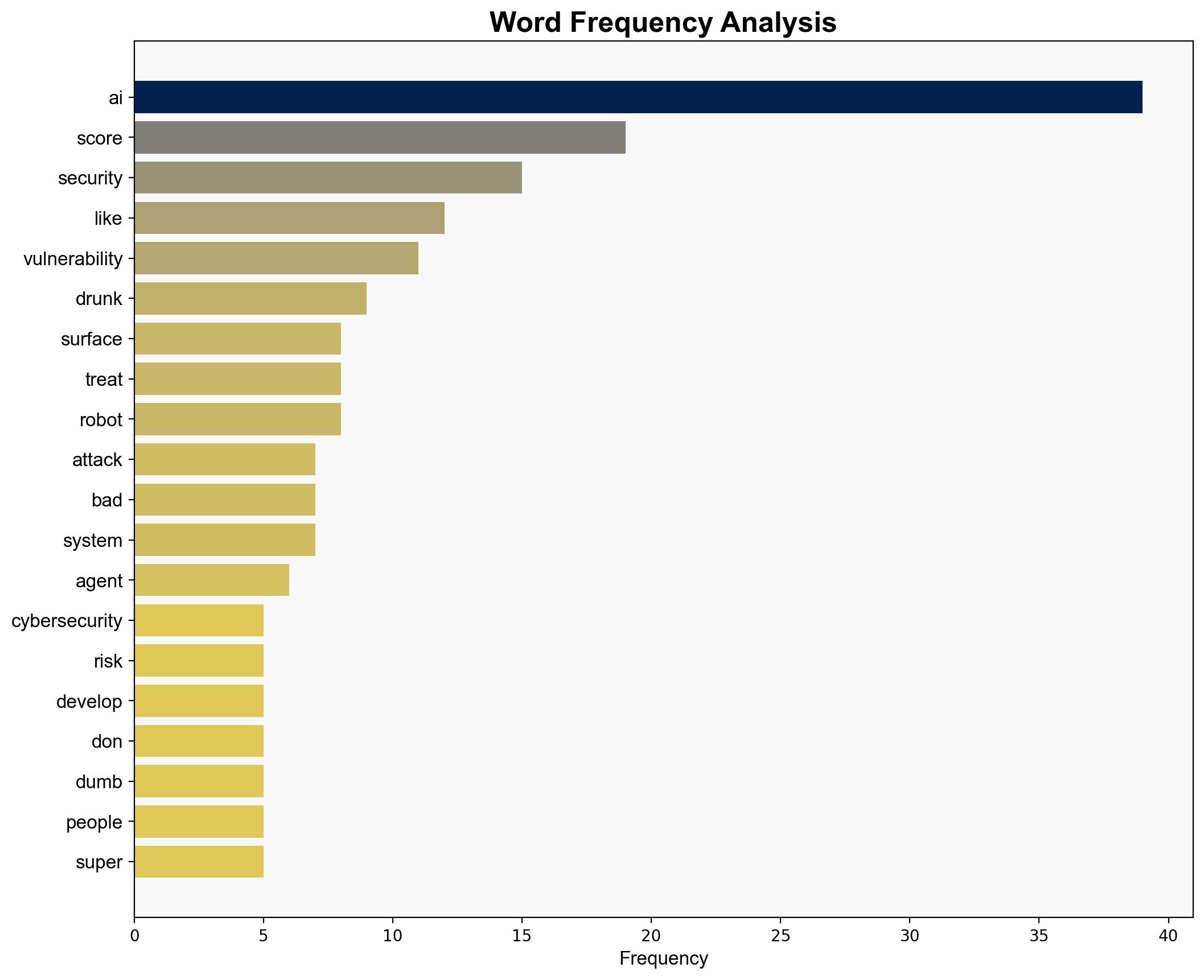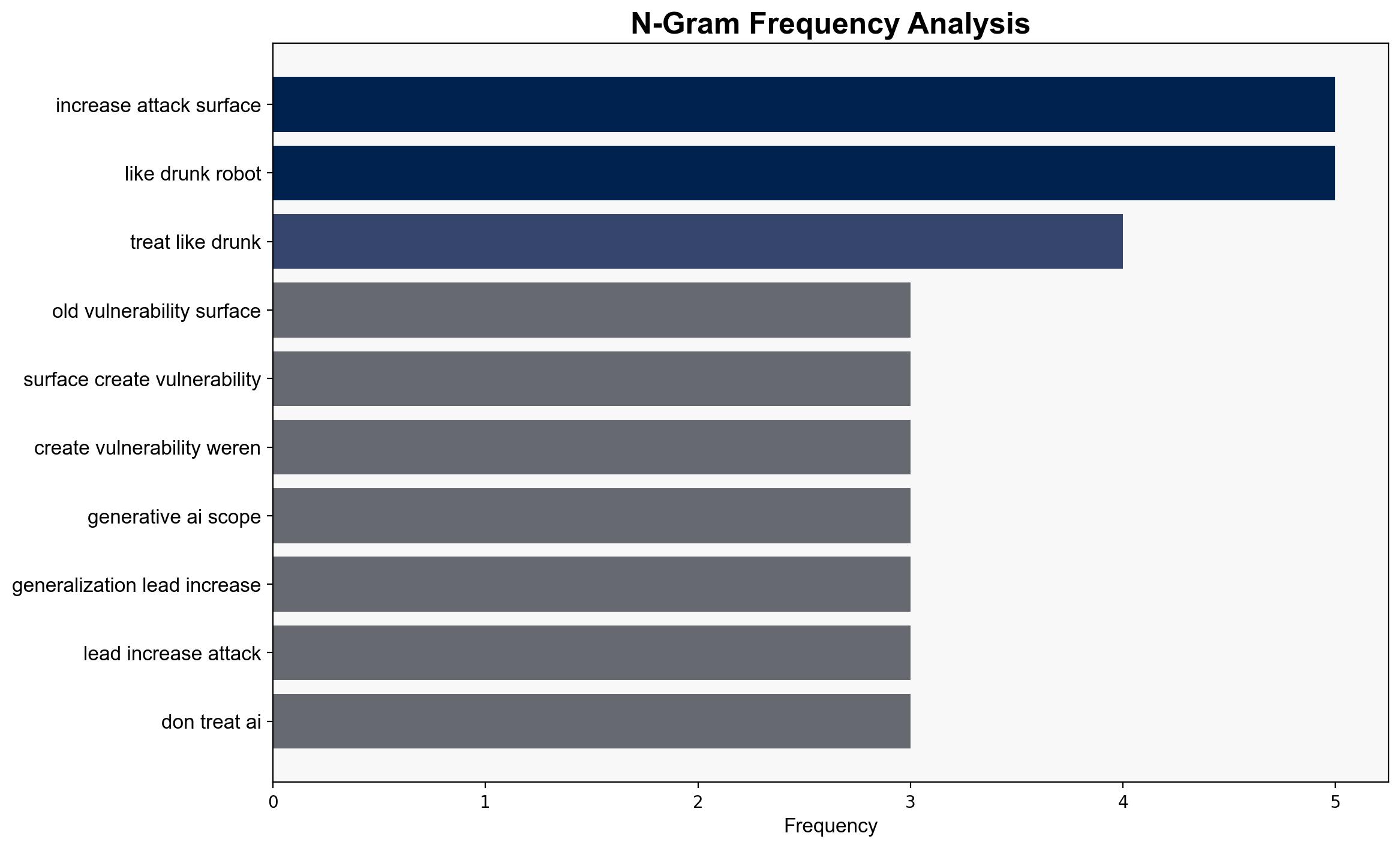Sloppy AI Defenses Take Cybersecurity Back To the 1990s Researchers Say – Slashdot.org
Published on: 2025-08-12
Intelligence Report: Sloppy AI Defenses Take Cybersecurity Back To the 1990s Researchers Say – Slashdot.org
1. BLUF (Bottom Line Up Front)
The strategic judgment indicates a moderate confidence level that the rapid integration of AI in cybersecurity is leading to vulnerabilities reminiscent of past decades. The most supported hypothesis suggests that the current rush to deploy AI without adequate safeguards is increasing the attack surface, making systems more susceptible to exploitation. It is recommended to implement rigorous testing and validation protocols for AI systems before deployment.
2. Competing Hypotheses
Hypothesis 1: The integration of AI in cybersecurity is leading to vulnerabilities similar to those seen in the early web era due to a lack of understanding and proper implementation of AI systems.
Hypothesis 2: The perceived increase in vulnerabilities is overstated, and AI systems are being unfairly compared to past technologies without considering advancements in security measures.
Using Analysis of Competing Hypotheses (ACH), Hypothesis 1 is better supported by the evidence, which highlights specific vulnerabilities and analogies to past security issues.
3. Key Assumptions and Red Flags
– Assumption: AI systems are being deployed without sufficient testing and understanding of their vulnerabilities.
– Red Flag: The analogy to past security issues may oversimplify the complexity of modern AI systems.
– Potential Bias: The narrative may be influenced by stakeholders with interests in slowing AI deployment.
– Missing Data: Lack of specific case studies or quantitative data on AI-related breaches.
4. Implications and Strategic Risks
The rapid deployment of AI without adequate security measures could lead to a significant increase in cyber threats, potentially affecting critical infrastructure and economic stability. The psychological impact of high-profile breaches could erode trust in AI technologies, slowing innovation and adoption. Geopolitically, adversaries may exploit these vulnerabilities to gain strategic advantages.
5. Recommendations and Outlook
- Implement comprehensive testing and validation protocols for AI systems before deployment.
- Develop industry-wide standards for AI security to ensure consistent protection measures.
- Scenario Projections:
- Best Case: AI systems are secured with robust protocols, reducing vulnerabilities and enhancing cybersecurity.
- Worst Case: Major breaches occur due to AI vulnerabilities, leading to economic and geopolitical instability.
- Most Likely: Incremental improvements in AI security as awareness and standards evolve.
6. Key Individuals and Entities
– Wendy Nather
– Joseph Carson
– Nathan Hamiel
7. Thematic Tags
national security threats, cybersecurity, counter-terrorism, regional focus





